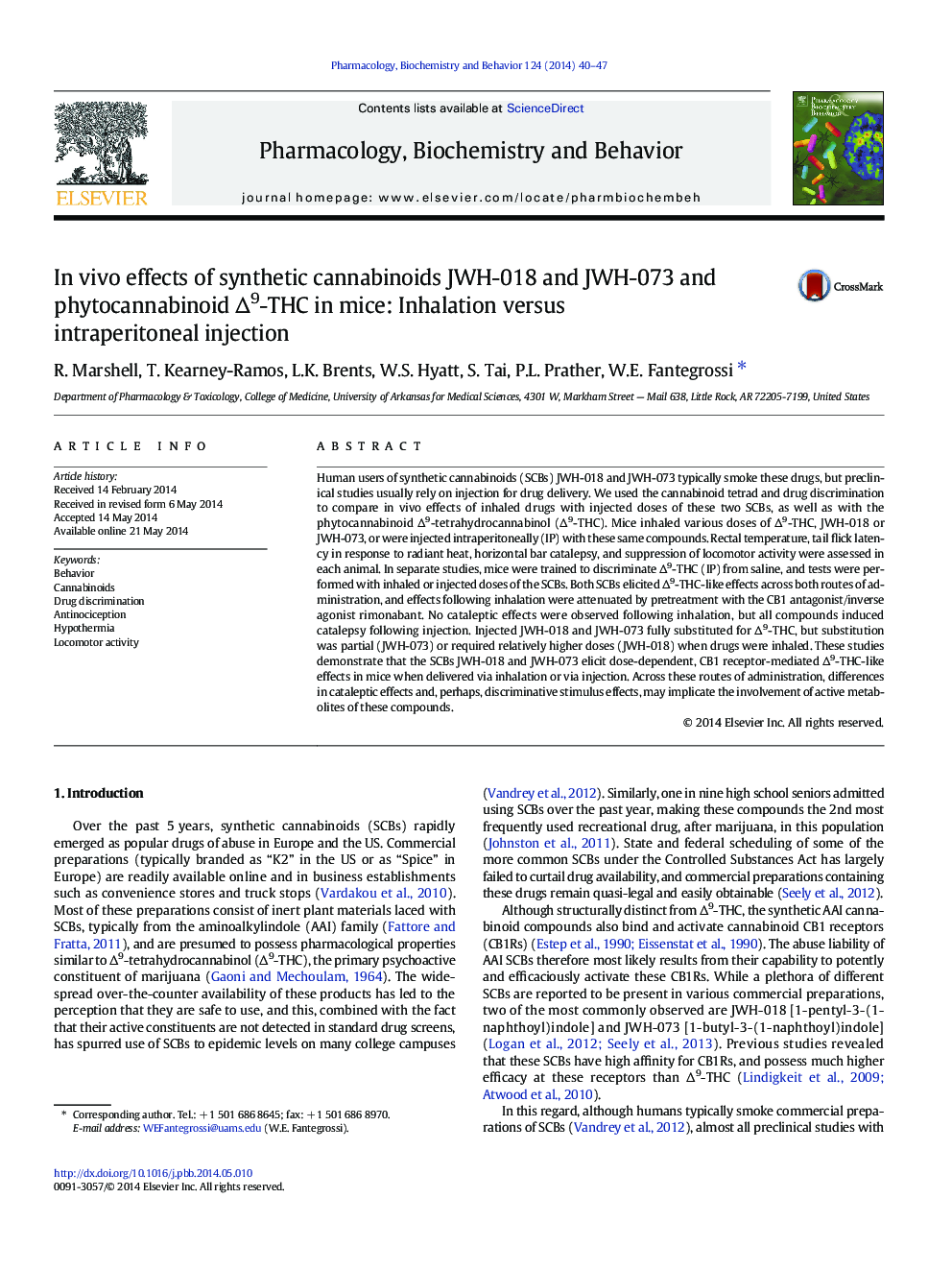| Article ID | Journal | Published Year | Pages | File Type |
|---|---|---|---|---|
| 8350965 | Pharmacology Biochemistry and Behavior | 2014 | 8 Pages |
Abstract
Human users of synthetic cannabinoids (SCBs) JWH-018 and JWH-073 typically smoke these drugs, but preclinical studies usually rely on injection for drug delivery. We used the cannabinoid tetrad and drug discrimination to compare in vivo effects of inhaled drugs with injected doses of these two SCBs, as well as with the phytocannabinoid Î9-tetrahydrocannabinol (Î9-THC). Mice inhaled various doses of Î9-THC, JWH-018 or JWH-073, or were injected intraperitoneally (IP) with these same compounds. Rectal temperature, tail flick latency in response to radiant heat, horizontal bar catalepsy, and suppression of locomotor activity were assessed in each animal. In separate studies, mice were trained to discriminate Î9-THC (IP) from saline, and tests were performed with inhaled or injected doses of the SCBs. Both SCBs elicited Î9-THC-like effects across both routes of administration, and effects following inhalation were attenuated by pretreatment with the CB1 antagonist/inverse agonist rimonabant. No cataleptic effects were observed following inhalation, but all compounds induced catalepsy following injection. Injected JWH-018 and JWH-073 fully substituted for Î9-THC, but substitution was partial (JWH-073) or required relatively higher doses (JWH-018) when drugs were inhaled. These studies demonstrate that the SCBs JWH-018 and JWH-073 elicit dose-dependent, CB1 receptor-mediated Î9-THC-like effects in mice when delivered via inhalation or via injection. Across these routes of administration, differences in cataleptic effects and, perhaps, discriminative stimulus effects, may implicate the involvement of active metabolites of these compounds.
Related Topics
Life Sciences
Biochemistry, Genetics and Molecular Biology
Biochemistry
Authors
R. Marshell, T. Kearney-Ramos, L.K. Brents, W.S. Hyatt, S. Tai, P.L. Prather, W.E. Fantegrossi,
